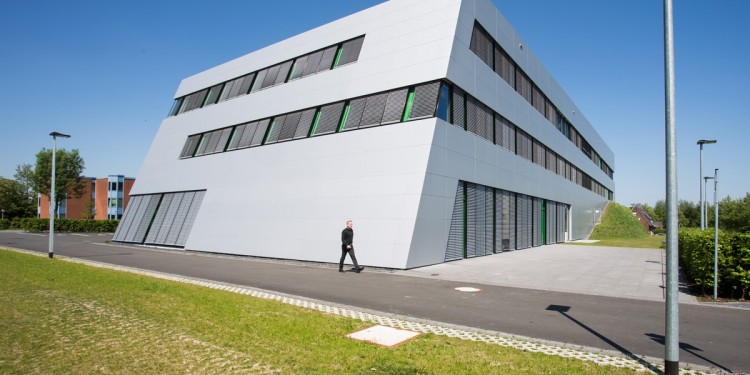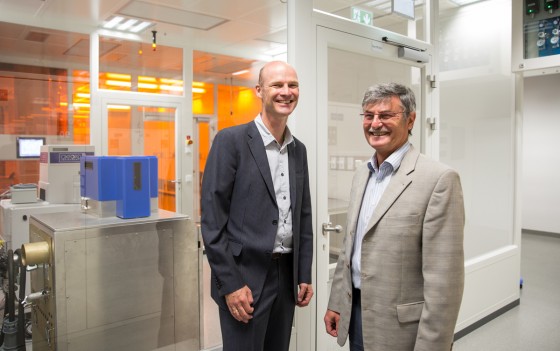
Four disciplines united under a single roof
In the new research building Center for Soft Nanoscience (SoN) researchers investigate how nanomaterials with complex properties and functions are produced in nature in order to follow this proven design strategy. Researchers at the SoN prepare synthetic materials based on biological models such as addressable nanocontainers or materials that switch their function in response to an external trigger. Besides these fundamental investigations, the high-precision tools required to make and analyze these nanomaterials are developed at the SoN.
The SoN is located at Busso-Peus-Straße 10, close to the Max Planck Institute for Molecular Biomedicine, the Centre for Nanotechnology (CeNTech), and the Multiscale Imaging Centre (MIC), which is currently under construction. The official inauguration of the SoN took place in November 2018. With a floor space of almost 8000 square metres, the building will accommodate around 140 researchers from 14 research groups in the fields of chemistry, physics, biology and biomedicine. Around three quarters have already moved into the SoN in the past few months.
A short interview
SoN Spokespersons Prof. Helmut Zacharias (Physics) and Prof. Bart Jan Ravoo (Chemistry) report on the new research building in an interview with Christina Hoppenbrock.
The four disciplines of physics, chemistry, biology and biomedicine are now for the first time united under a single roof at the SoN...

Will the students also benefit?
Ravoo: Yes, very much so. The new laboratories and equipment will be a fantastic stimulus, particularly for MSc and PhD theses. Most of the experiments in SoN will also be carried out by MSc and PhD students. We are already seeing how motivating it is to do research in such modern and well-equipped laboratories. SoN will also definitely become a magnet that attracts students to Münster.
Zacharias: In general, SoN will significantly increase Münster’s international visibility. The new laboratories and equipment will allow us to establish new research groups – for example, in “soft matter” and electron tomography. The SoN will provide the infrastructure for new collaborative projects. In addition, five independent junior research groups are already active at the SoN. Most come with competitive research fellowships such as those from the ERC, Emmy Noether, or the NRW programme for scholars returning to the region from abroad.
What are your hopes for the future?
Ravoo: First of all, since the building is now finished, all the research equipment is currently taken into operation. That will allow all the groups that have not yet moved in to soon start their work in the SoN. Then we need to finalize some important recruitments. We are also planning a Collaborative Research Centre on “Adaptive Nanomaterials”. The SoN researchers will form the core of this new network.
